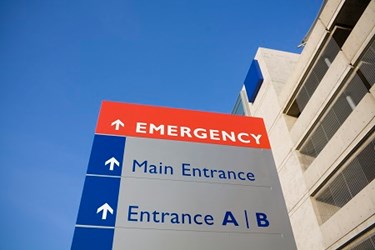Leapfrog Study Finds Choice Of Hospital Has Implications For Outcomes

By Christine Kern, contributing writer

Hospitals with D or F grades had a nearly 50 percent higher risk of avoidable death.
Research released by The Leapfrog Group reveals hospitals that received a D or F grade had a 49.8 percent higher risk of avoidable death compared with A-grade hospitals
Using Hospital Safety Score data to grade more than 2,500 U.S. hospitals, analysts assessed hospitals based on medical errors, accidents, injuries, and infections. And while hospital care has improved since 2012, when the Hospital Safety Score effort was initiated, the number of avoidable deaths remains significant.
Findings show there are approximately 206,021 avoidable deaths in the U.S. every year, although that figure only accounted for a subset of avoidable harms patients often encounter in hospitals. Of these avoidable deaths, 162,117 occur in B, C, D, or F-grade hospitals.
According to the data, avoidable deaths were 9 percent higher in B-grade hospitals and 35 percent higher in C-grade hospitals than A-grade hospitals. The study was led by Matt Austin, an assistant professor at the Armstrong Institute for Patient Safety and Quality, and the Department of Anesthesiology and Critical Care Medicine at Johns Hopkins School of Medicine.
Approximately 33,439 lives could be saved annually if all hospitals were to perform as well as those that received an A-grade organization, the analysis projected.
“It is time for every hospital in America to put patient safety at the top of their priority list, because tens of thousands of lives are at stake,” said Leah Binder, President and CEO of The Leapfrog Group. “The Hospital Safety Score alerts consumers to the dangers, but as this analysis shows, even A hospitals are not perfectly safe.”
The study also highlighted the role new patient experience measures play in improving patient safety outcomes, including improved communication and responsiveness levels. Yet, despite these recognized efforts, elimination of all preventable harms remains elusive.
The Score was updated this month to include patient survey results about communication about medicines, discharge, nurses, and doctors as well as the responsiveness of a hospital staff. It also for the first time included MRSA Bacteremia and C.difficile data. Other report findings include:
- Of the 2,571 hospitals issued a Hospital Safety Score, 798 earned an A, 639 earned a B, 957 earned a C, 162 earned a D and 15 earned an F.
- Additionally, 153 hospitals earned the “Straight A” since 2013 designation, which calls attention to hospitals who have consistently received an A grade for safety in the last three years of Hospital Safety Scores.
- Maine, which has had the highest percentage of A hospitals for the last four rounds of the Score, dipped to second behind Vermont, where 83 percent of its hospitals achieved an A. This is the first time Vermont has claimed the number-one spot.
